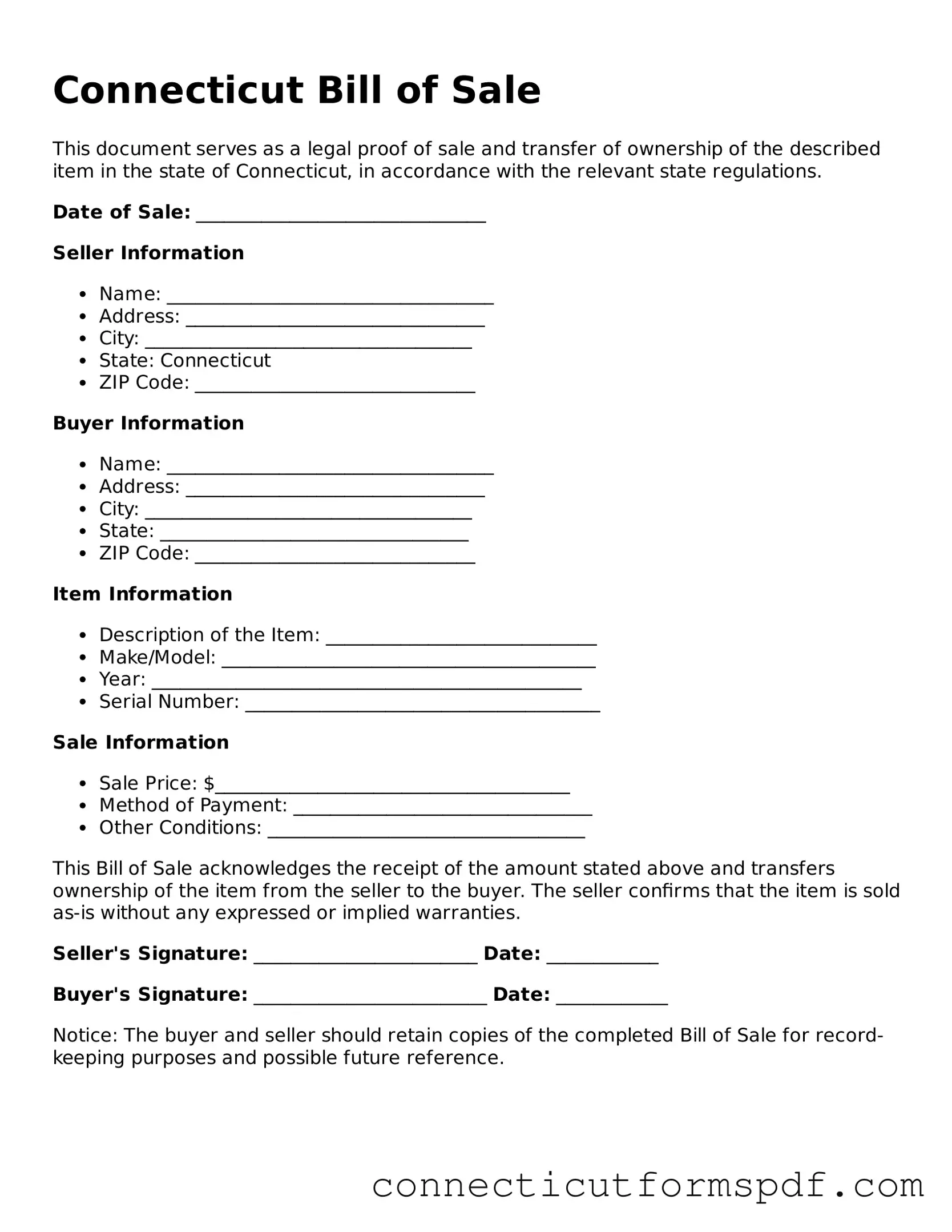Connecticut Bill of Sale
This document serves as a legal proof of sale and transfer of ownership of the described item in the state of Connecticut, in accordance with the relevant state regulations.
Date of Sale: _______________________________
Seller Information
- Name: ___________________________________
- Address: ________________________________
- City: ___________________________________
- State: Connecticut
- ZIP Code: ______________________________
Buyer Information
- Name: ___________________________________
- Address: ________________________________
- City: ___________________________________
- State: _________________________________
- ZIP Code: ______________________________
Item Information
- Description of the Item: _____________________________
- Make/Model: ________________________________________
- Year: ______________________________________________
- Serial Number: ______________________________________
Sale Information
- Sale Price: $______________________________________
- Method of Payment: ________________________________
- Other Conditions: __________________________________
This Bill of Sale acknowledges the receipt of the amount stated above and transfers ownership of the item from the seller to the buyer. The seller confirms that the item is sold as-is without any expressed or implied warranties.
Seller's Signature: ________________________ Date: ____________
Buyer's Signature: _________________________ Date: ____________
Notice: The buyer and seller should retain copies of the completed Bill of Sale for record-keeping purposes and possible future reference.
